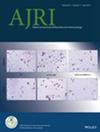Mitochondrial DNA Copy Number and Risk of Gestational Metabolic Disorders: A Two-Sample Mendelian Randomization Study
Abstract
Background
Mitochondrial DNA copy number (mtDNA-CN) has been implicated in gestational metabolic disorders (GMD), yet their causal relationships remain unclear. This study employed genetic approaches to investigate potential causal associations between mtDNA-CN and various GMDs.
Methods
We conducted a two-sample Mendelian randomization (MR) analysis utilizing genome-wide association study (GWAS) summary statistics from large-scale populations: mtDNA-CN (n = 395 718), preeclampsia (PE) (n = 267 242), gestational diabetes mellitus (GDM) (n = 123 579), gestational hypertension (GH) (n = 118 990), hyperlipidemia (n = 9714), and obesity (n = 463 010). Independent single-nucleotide polymorphisms (SNPs) were rigorously selected as instrumental variables (IVs) following stringent criteria. The primary analysis employed the fixed-effects inverse variance weighted (IVW) method. Multiple sensitivity analyses, including leave-one-out analysis, Cochran's Q test, and MR-Egger regression, were conducted to assess the robustness of our findings.
Results
The IVW analysis revealed a significant protective association between increased mtDNA-CN and PE risk (OR = 0.6262, 95% CI: 0.4201–0.9335, p = 0.0283). However, no significant associations were observed between mtDNA-CN and other GMDs (all p > 0.05). Sensitivity analyses, including MR-Egger regression, showed no evidence of horizontal pleiotropy (all p > 0.05), supporting the robustness of our findings.
Conclusion
This genetic investigation provides compelling evidence for a potentially protective effect of higher mtDNA-CN against PE development. These findings not only suggest mtDNA-CN as a promising biomarker for PE risk assessment but also offer novel insights into the biological mechanisms underlying PE, potentially informing future preventive strategies and therapeutic interventions.

 求助内容:
求助内容: 应助结果提醒方式:
应助结果提醒方式:


